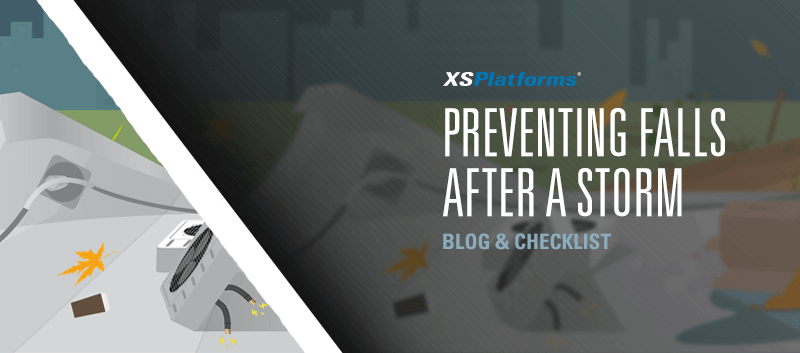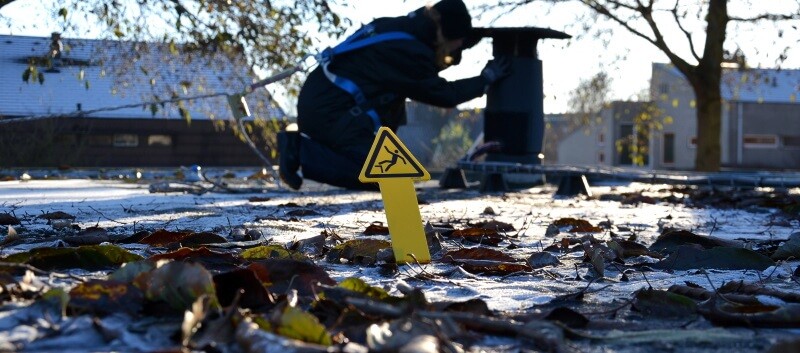
Roof inspection after a storm, a short guide
A thorough roof inspection after a storm is important because a roof may not be as safe as before. Strong winds, excessive amounts of rain and other effects of a hurricane or storm put stress on a structure. Protective materials can be torn off the roof. Debris can puncture the roofing material, rooftop installations may have gotten damaged or the structure has become unstable.
The damage caused by a storm may not be visible right away, but rainwater can make its way into the structure through the smallest punctures or cracks. The consequences of this can stay hidden until months later when it causes serious issues. This is why a rooftop inspection is vitally important.
Inspection of damaged roofs after a storm
Not only the rooftop needs to be inspected. The installations on a roof also need to be checked for damages or even repaired.
The first step should be ensuring the structure is stable, and that you and other personnel can enter the roof surface without danger of a collapse or falling through.
Personal protection
Secondly, ensure that all those who have to access the roof are aware of the safety procedures and are equipped with the proper Personal Protective Equipment (PPE), such as protective boots, safety glasses, a safety helmet and gloves. Additionally, depending on what type of fall protection is necessary to keep workers safe, fall protection PPE needs to be worn. For example, a full body harness with a lanyard so that a worker can attach to a horizontal lifeline system.
Inspect fall protection systems after a storm
Thirdly the fall protection system on your roof needs inspection, before you can use it to safely access and inspect the rest of the roof. After exposure to a storm and flying debris there is a possibility that the system sustained damage too. Be careful when giving your fall protection a look over. Counterweights may have moved and guardrails may not be as stable as they were before. Inspect railings and anchor points for missing parts, dents and cracks and ensure they are still firmly fixed to the structure. When you have a horizontal lifeline on your roof, ensure that the steel wire-rope isn’t sagging and scraping the roof surface.
If you suspect the system has been compromised do not use it. Contact the manufacturer, or the party that installed the system, immediately.
No fall protection on your roof? There are temporary fall prevention solutions available to ensure safety while inspecting the roof. Options include temporary anchor points or temporary edge protection such as guardrails.
When the fall protection system is still in good condition or when you receive confirmation that the system is still safe to use you can send up people to further inspect the roof.

Stay safe while inspecting the roof
Safely inspecting a roof, and the installations on it, means using the fall protection system properly and always minding your personal safety. Being careful to avoid slips and trips, will help prevent dangerous falls.
Clear any debris of the roof, but be sure to do this safely. Do not block your vision when carrying materials. Be careful in removing debris. Debrismay be hiding a hole in the structure, that could lead to a fall. And don’t step on debris if it is unstable, you could slip and maybe even fall over a roof edge.
Check for any damages to the roof surface, such as holes, punctures or roofing material that came loose. These do not only pose a risk to the structure but also create a trip hazard.
Pay special attention to skylights and chimneys during rooftop inspection, if your roof has any, as the flashing around these installations may have become damaged. You got to be careful around skylights, most of them cannot carry the weight of a person and leaning on them, or stepping on them can cause you to fall through them.
You should take note of any areas where water may be pooling. Stagnant water may become a cause of a leak, but it also poses a slip risk. Be cautious as the surface may be slippery.
Download fall protection inspection checklist
To help you inspect your fall protection system after a storm we’ve put together a checklist with attention points. Additionally we’ve also put some tips to avoid slips, trips and falls into a handy poster.